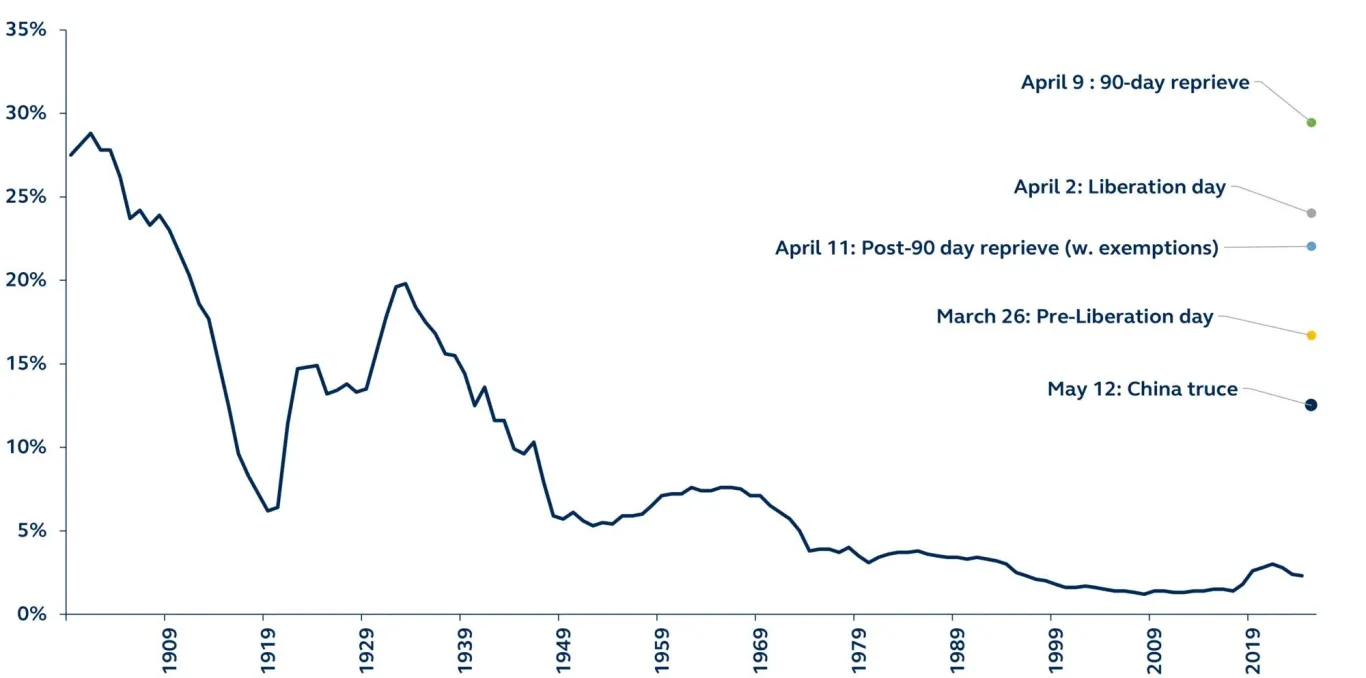Market outlook
Today’s announcement confirms that peak pessimism is firmly in the rear-view mirror. There remains some potential for disappointment and markets should not be complacent about the risks, especially as additional sectoral tariffs are potentially forthcoming for pharmaceuticals and semiconductors. Indeed, despite the recent corrective turns on trade policy, the direction of travel implies more, rather than less, trade barriers compared to a year ago.
But the key takeaway for investors from today’s announcement is that while the Trump administration wanted to restructure the global trading system, it did not mean to implement a de facto trade embargo that led to the wholesale decoupling between the U.S. and China. The implication is that the worst-case scenario has been averted and, providing the scarring to the U.S. economy of the past two months is not too deep, the economy should not be confronting a recession this year.
Moreover, with tax policy moving forward and Treasury Secretary Bessent dedicating more time of late to speak about the promise of greater deregulation in the months ahead, growth friendly measures should also provide a boost to the U.S. outlook.
A key question will be whether the discussions around an end to U.S. exceptionalism now come to a halt. Certainly, if the U.S. is not looking to redraw trade lines at the expense of near-term U.S. economic strength, there should be renewed confidence in the U.S. as an investment destination. But with global economies now galvanized to boost their economic foundations, global diversification is a more pertinent discussion than ever before. Specifically, in the case of Europe, a shift away from fiscal austerity and a consideration of the benefits of deregulation should raise its long-term economic profile. Longer-term, the broader question of the credibility of the U.S. and institutions is unlikely to disappear.
Most fundamentally, today’s announcement is an important reminder to investors to stay invested. Trying to time the market—and time policy announcements—is an impossible task and risks missing out on significant gains. Market pullbacks are not unusual—on average, the U.S. stock market experiences an intra-year decline of 13.5%, yet most years still end with gains of around 9%. Volatility is a normal feature of investing, not a flaw—those who remain disciplined and invested through the noise are often rewarded over time.




